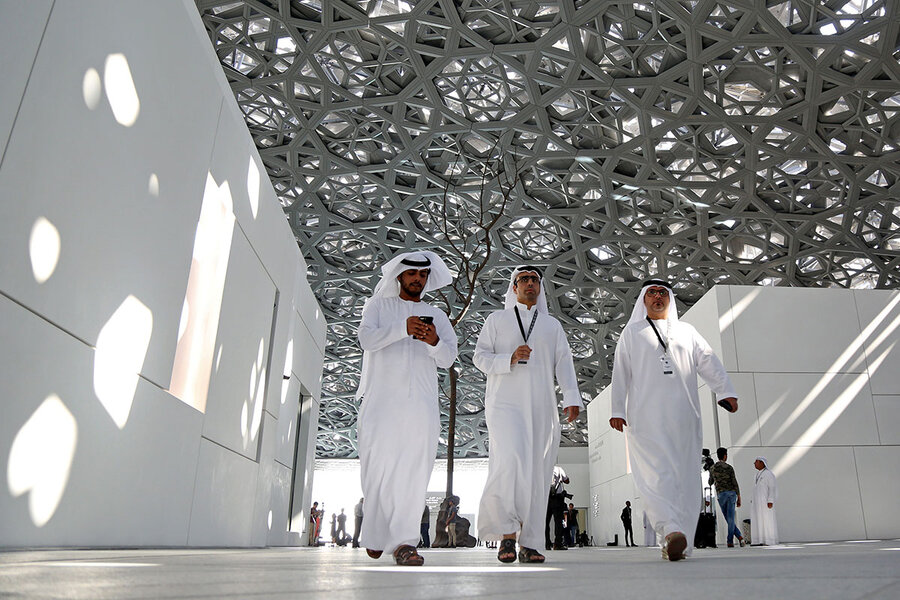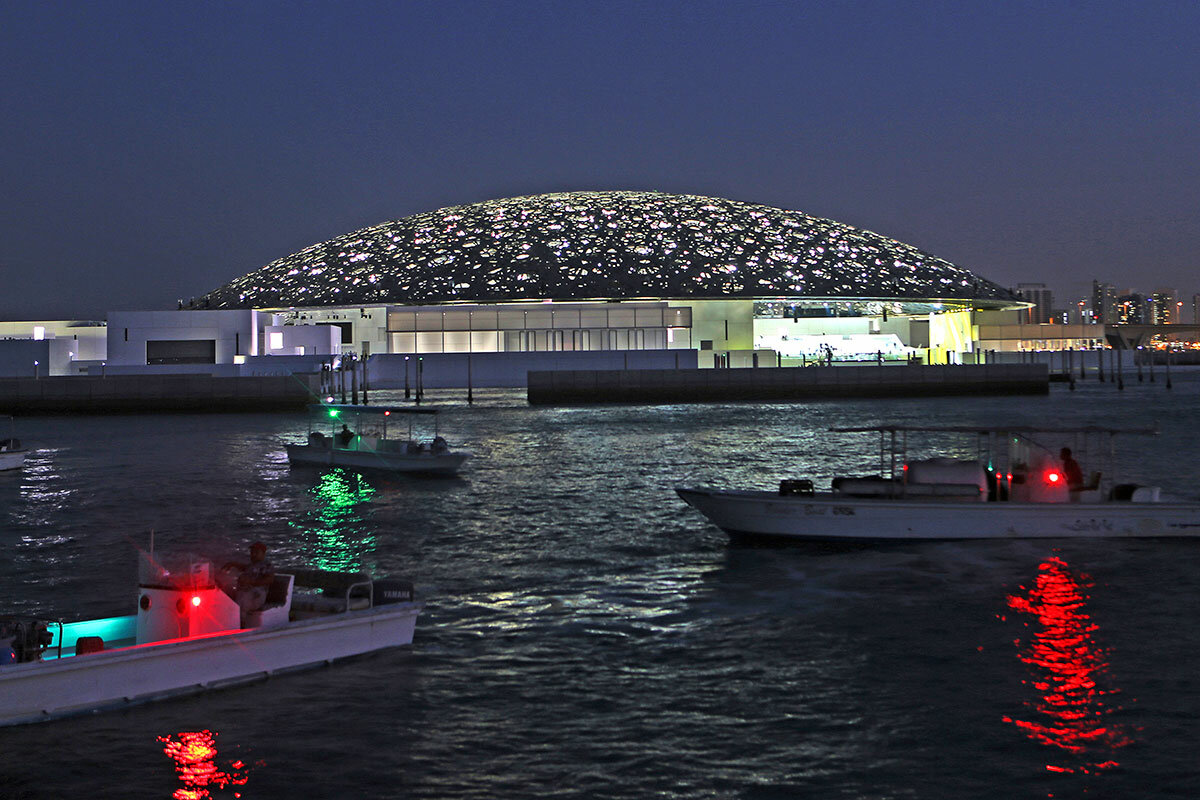With Louvre Abu Dhabi, France displays new vision for global influence
Loading...
| Paris
The latticed dome, nearly 600 feet in diameter and comprised of 8,000 metal stars that weigh together the same as the Eiffel Tower, plays with Gulf sunlight to form a “rain of light” – the signature of what is being touted as the most ambitious museum project of the 21st century.
The Louvre Abu Dhabi, perched on Saadiyat Island overlooking the sea, opens to the public on Saturday, bringing the most recognized museum name in the world to the United Arab Emirates. And by lending its most valuable brand, not to mention its know-how, to the project, the French are also wielding power that’s been on the wane on the world stage but remains impregnable when it comes to cultural patrimony.
Of all of the Western investments in the UAE, from museums to universities, the Louvre's vision is the most spectacular, says Martin Kemp, a professor emeritus of art history at the University of Oxford. “It’s a particularly French vision,” he says on the phone from Abu Dhabi. “France as an operator on a world scale, obviously it is less financially and politically than it used to be, but in a way it can still do that culturally.”
Ten years in the making, the Louvre Abu Dhabi is no replica of the 18th-century institution born during the French Revolution. The play of light and shadow under the dome gives the visitor the feel of being in a souk, of being in a grove of palm trees found in the oases of the UAE, says Jean Nouvel, the famed French architect who designed the building.
It is the first “universal museum” in the Arab world and bears testament to the capital's “golden age,” says Mr. Nouvel. It’s been billed as a bridge between East and West, reiterated by French President Emmanuel Macron, who attended the museum’s inauguration Wednesday evening.
The more than $1.2 billion deal was signed back in 2007 under then-President Jacques Chirac. It designated $525 million for the use of the “Louvre” title over the next 30 years and $750 million for French experts to oversee 300 loaned works of art from 13 leading museums. Visitors Saturday will be able to view Leonardo da Vinci’s La Belle Ferronnière, on loan from the Louvre, or Vincent van Gogh’s self-portrait, formerly housed at the Musee D’Orsay and Musée de l'Orangerie.
Tristram Hunt, director of Britain's Victoria and Albert Museum, commended France’s assertion of soft power, contrasting it with the introversion of Britain in the post-Brexit era. “While Napoleon’s invasion was hard power,” he wrote in the Guardian, referring to the military leader’s invasion of Egypt in 1798 to spread Enlightenment ideals, “Macron’s visit is all about the long-term insinuation of soft power. Yet it signals a hard truth: if Brexit Britain is going to find its feet as a global player, we need to be thinking about similarly ambitious displays of cultural bravado.”
The deal kicked up a storm of criticism in France. There were those who objected to the Louvre and other institutions arguably selling their souls for petrodollars. “The idea of selling or renting the Louvre brand abroad posed one problem,” says Laurent Martin, a professor of the history of cultural policy in France and Europe at the Sorbonne Nouvelle – Paris 3. “To do so with a country that does not respect the values of liberal democratic societies of Europe posed another.”
One of the more concrete controversies to arise during the 10-year project was the abuse of migrant workers constructing the site, called out by Human Rights Watch – not exactly the stuff of les droits de l'homme (human rights), declared in France in 1789, four years before the Louvre opened to the public.
But none of this was on the agenda as the museum was inaugurated in the presence of kings and other rulers. Mr. Macron called it a showcase, as a “bridge between civilizations,” of “beauty of the whole world.”
Nouvel, a Pritzker Prize winner who met with the Anglo-American Press Association in Paris in September, told the group he sees the museum as a “testimony of this golden age, as was done in every city of the world in the past.” It was built not for decades but for centuries to come: “It is like a cathedral in this epoch, it’s exactly the same thing.”
“An architect who is ambitious is not ambitious for himself but because the project is so important,” he said. “The ambition is the real will to leave the best testimony of the epoch.”









